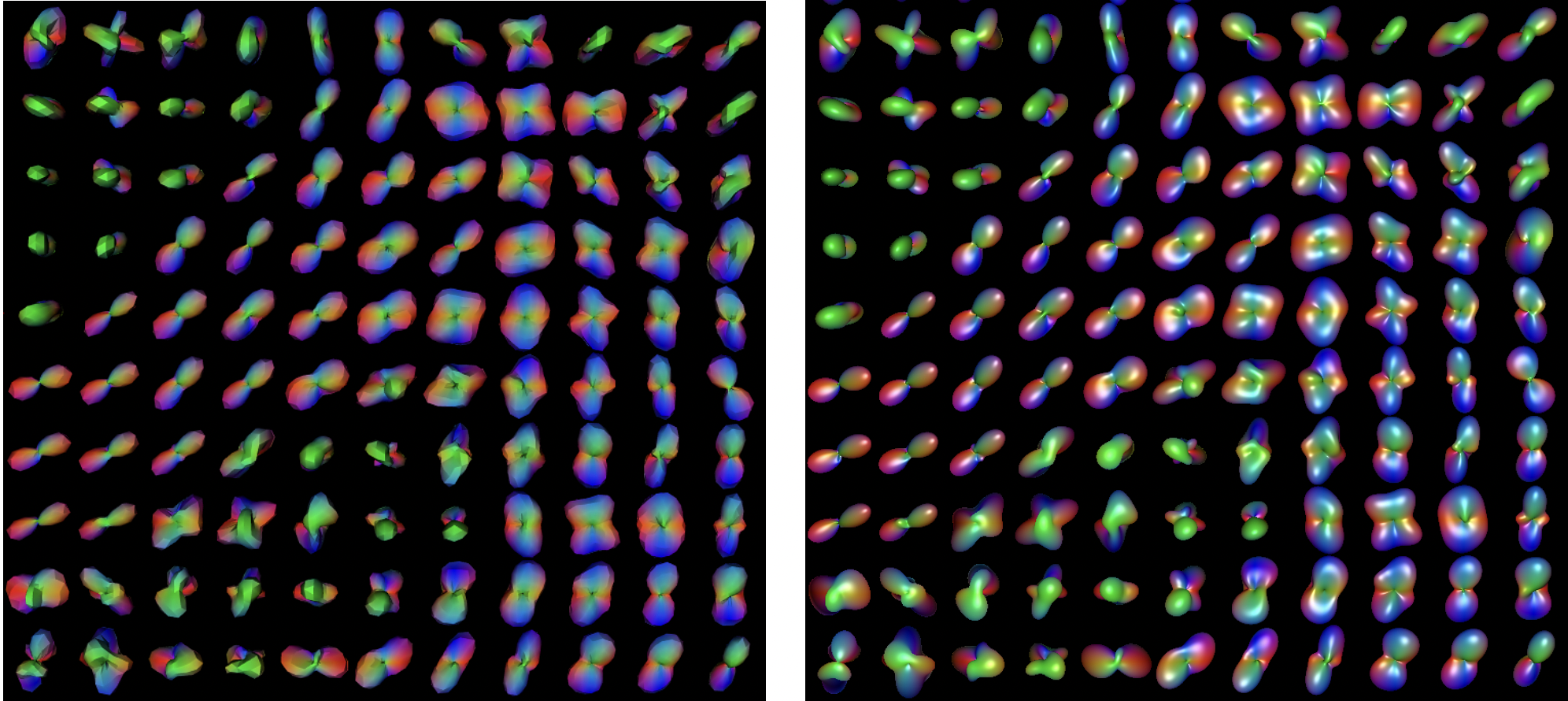In Proceedings of PacificVis
Fast and sleek glyph rendering for interactive HARDI data exploration

High angular resolution diffusion imaging (HARDI) is an emerging magnetic resonance imaging (MRI) technique that overcomes some decisive limitations of its predecessor diffusion tensor imaging (DTI). HARDI can resolve locally more than one direction in the diffusion pattern of water molecules and thereby opens up the opportunity to display and track crossing fibers. Showing the local structure of the reconstructed, angular probability profiles in a fast, detailed, and interactive way can improve the quality of the research in this area and help to move it into clinical application. In this paper we present a novel approach for HARDI glyph visualization or, more generally, for the visualization of any function that resides on a sphere and that can be expressed by a Laplace series. Our GPU-accelerated glyph rendering improves the performance of the traditional way of HARDI glyph visualization as well as the visual quality of the reconstructed data, thus offering interactive HARDI data exploration of the local structure of the white brain matter in-vivo. In this paper we exploit the capabilities of modern GPUs to overcome the large, processor-intensive and memory-consuming data visualization.
More Information
Citation
BibTex
@inproceedings{bib:peeters:2009,
author = { Peeters, T.H.J.M. and Prckovska, V. and van Almsick, M.A. and Vilanova, Anna and ter Haar Romeny, B.M. },
title = { Fast and sleek glyph rendering for interactive HARDI data exploration },
booktitle = { In Proceedings of PacificVis },
year = { 2009 },
pages = { 153--160 },
doi = { 10.1109/PACIFICVIS.2009.4906851 },
dblp = { conf/apvis/PeetersPAVR09 },
url = { https://publications.graphics.tudelft.nl/papers/371 },
}